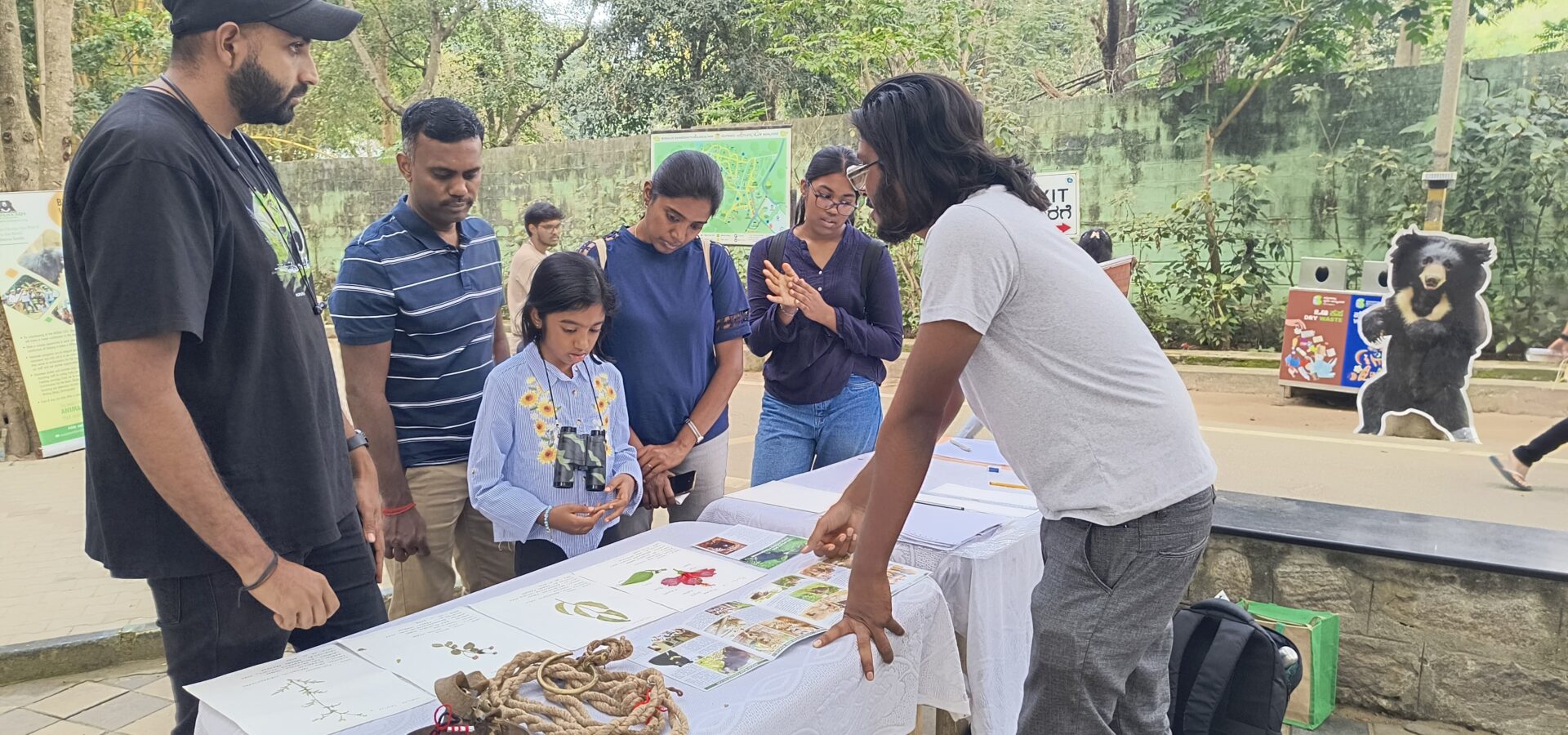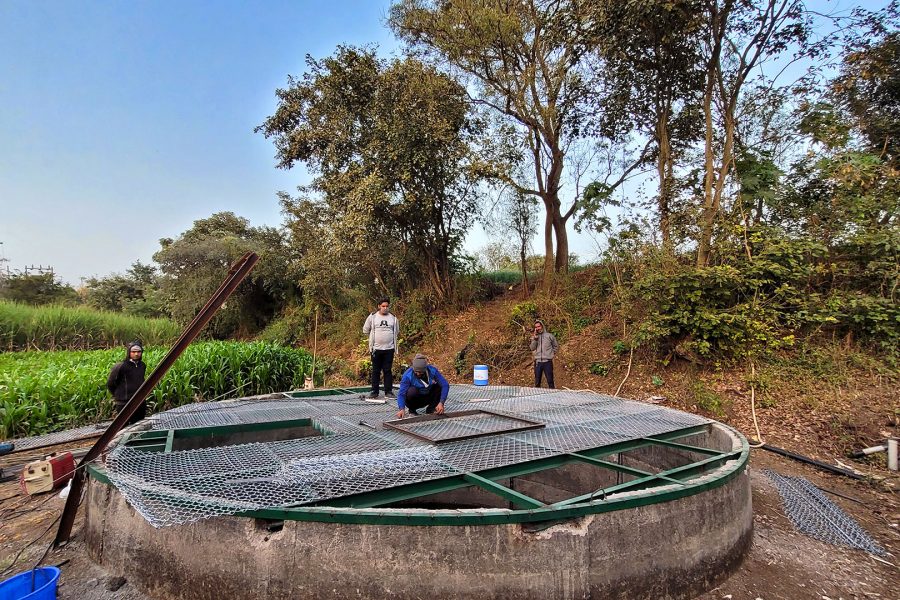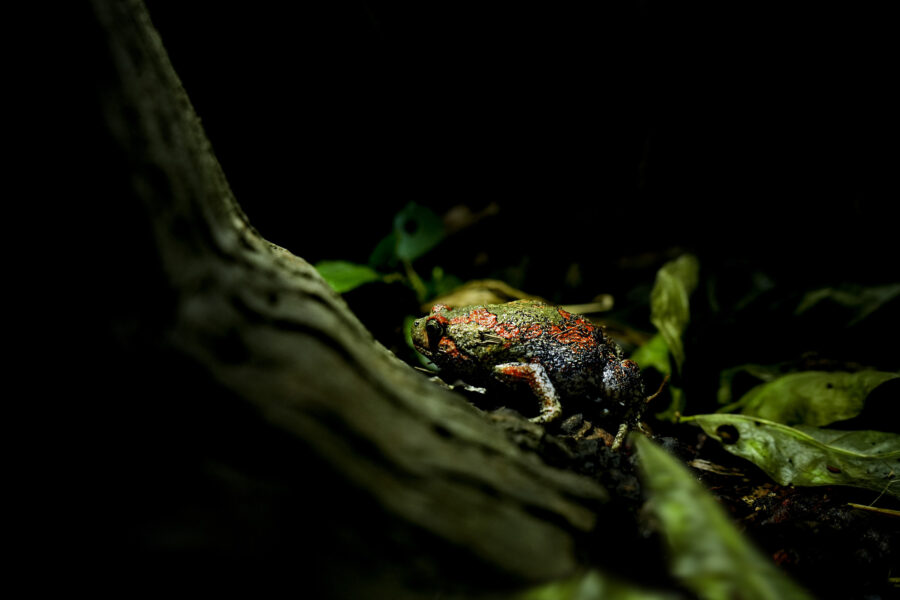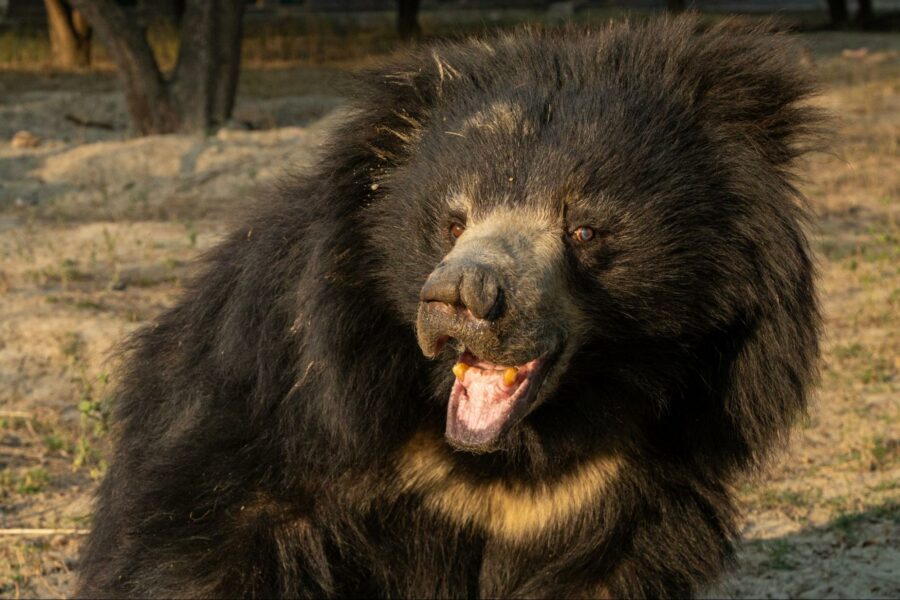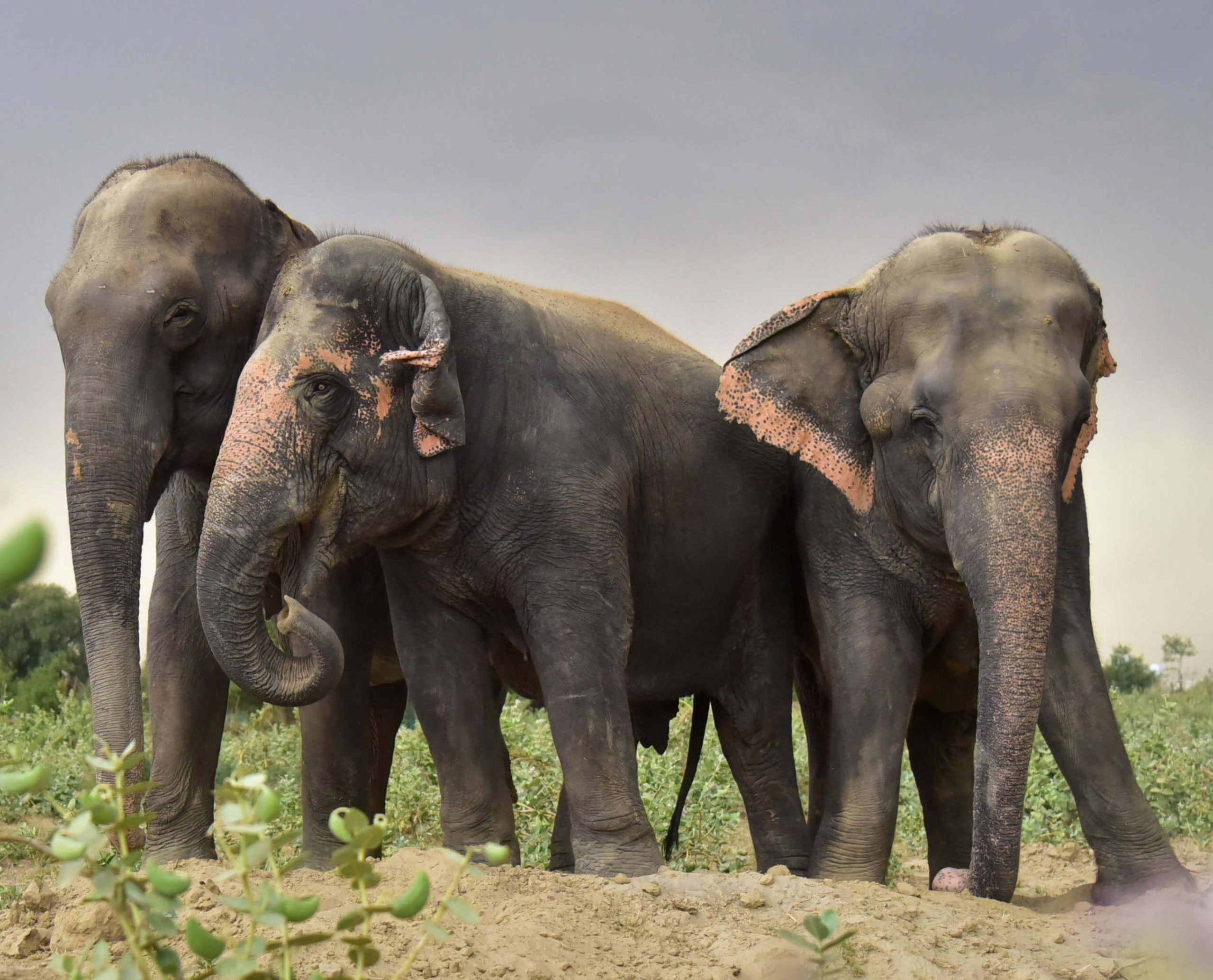On the eve of Christmas 2024, a proactive effort was undertaken to raise awareness about invasive species and the importance of plant conservation. Pranav Pradeep, Education Officer with Wildlife SOS and Athul Sathya Ram, Wildlife SOS’s Outreach Officer and , Bangalore conducted a herbarium-making workshop at the Bannerghatta Zoo. This event attracted participants from various age groups, who were eager to learn about the process of creating a herbarium and the significance of preserving plant biodiversity.

A herbarium can be defined as a collection of dried plants that is predominantly studied by scientists and researchers. During the informative workshop held, participants were introduced to the process of making a herbarium by following the steps of collecting, pressing, and drying plant specimens within specific sheets. A herbarium plays an important role as it tracks the growth, health and population of the plant species that exist around us. It enables curious minds to identify native plant species and understand the ecological roles they play. The workshop emphasised on how documenting local flora can not only help experts ensure their safety, but also detect the presence of those plant species that may be harming them. These ‘invasive species’ do not naturally belong to that specific environment, but instead, have been introduced to it, and have the potential to gravely impact the prevalent greenery.
Attendees were shown herbariums of these invasive alien plant species (IAPS) so that they could be better informed about their identity and negative affect. This led them to gain a deeper appreciation for their natural surroundings, and a commitment to protecting native plant life.
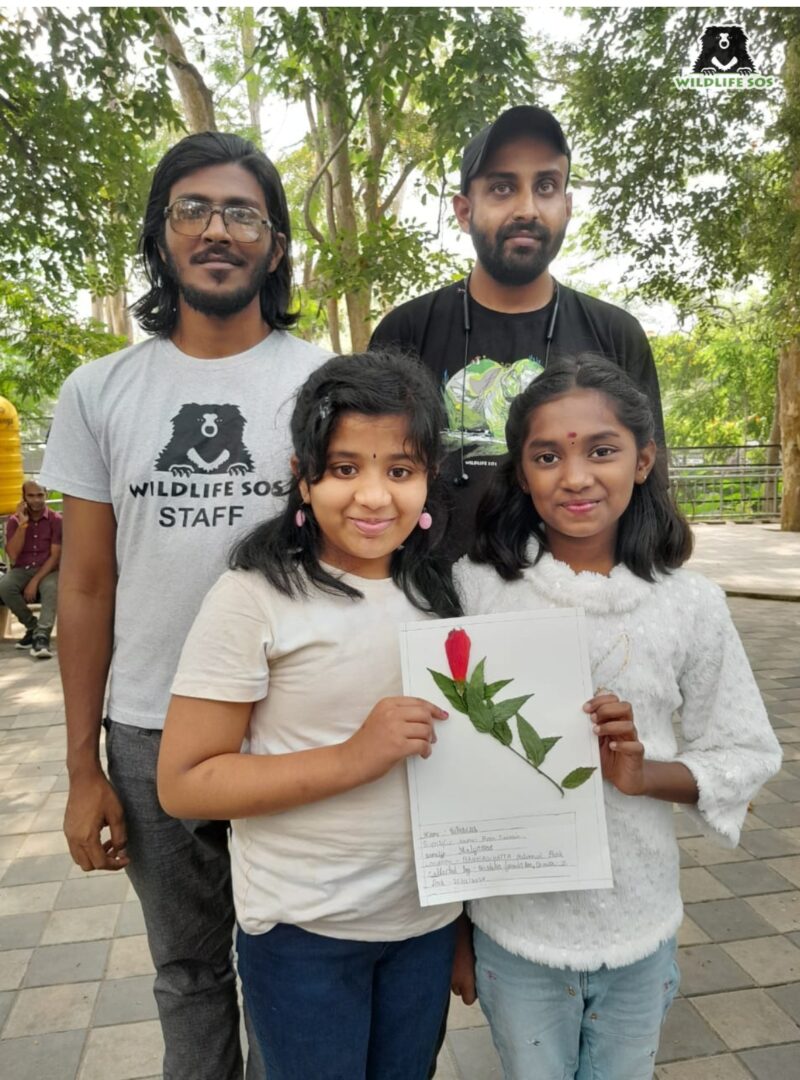
Biodiversity sustains ecosystems and human well-being, providing food, nutrition, and herbal medicines. However, IAPS threaten this balance by outcompeting native flora and disrupting ecosystems. Often introduced by humans, these invaders spread unchecked, driving biodiversity loss. After habitat destruction, IAPS are the biggest threat to local plant species, making their impact a global environmental concern. Which plant species protect their ecosystem and which do not is unfortunately barely known by many. To begin this lesson, let’s first understand the three different categories plants around us are divided into:
Native Plant
A native plant is a species that has naturally evolved and thrived in a specific region over thousands of years, perfectly adapting to the local climate, soil, and ecological conditions. Native plants in India such as mango tree (Mangifera indica), moringa (Moringa oleifera), jamun tree (Syzygium cumini), ashoka tree (Saraca asoca) form the backbone of their ecosystems, providing food, shelter, and stability to countless wild species.
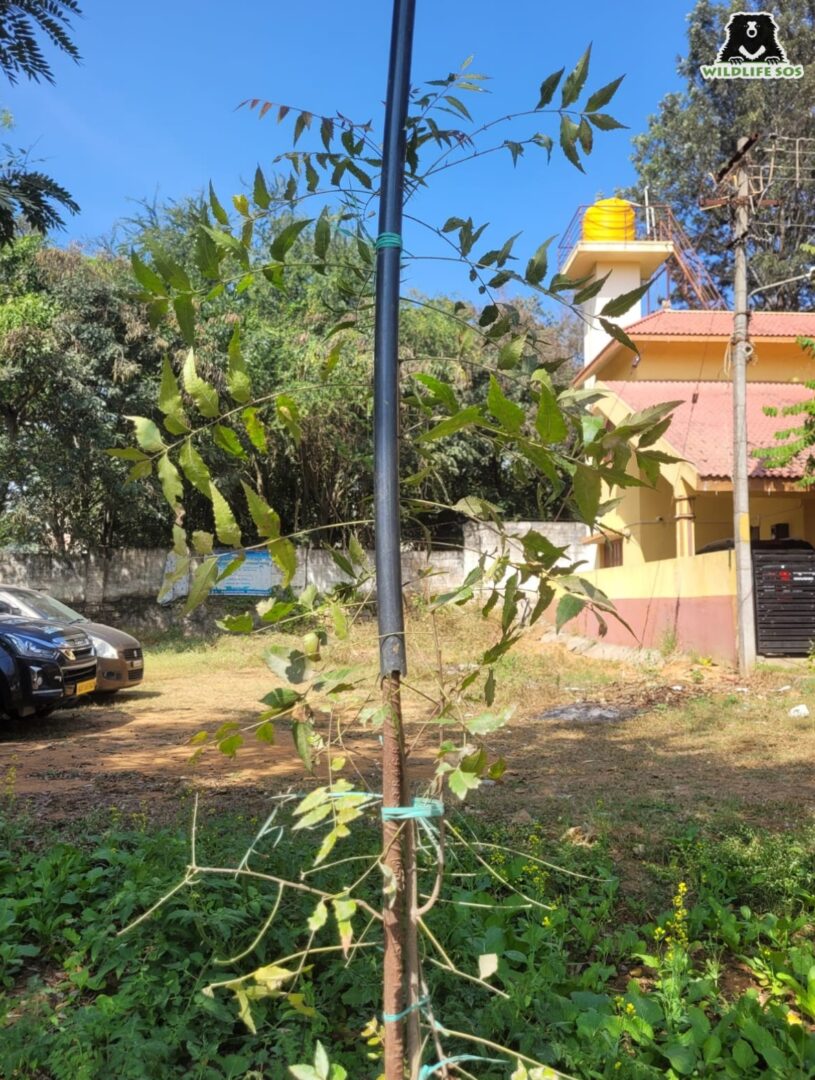
Non-Native Plant
Non-native plants, or introduced species, are those that grow outside their original habitats, after having been transported — intentionally or accidentally — to new regions. Plants like tomato and potato are non-native to India, but may not always threaten native ecosystems. In fact, they often blend harmoniously with their new environments, offering both ecological and nutritional benefits.

Invasive Plant
Invasive plants are the unwelcome guests of the plant world. These non-native species don’t just settle into new environments, they dominate them, spreading aggressively and causing significant harm to the natural plant species. A prime example is Lantana camara, often ranked among the world’s most invasive plants. Its rapid spread across India’s tiger reserves has already compromised half of these critical habitats.
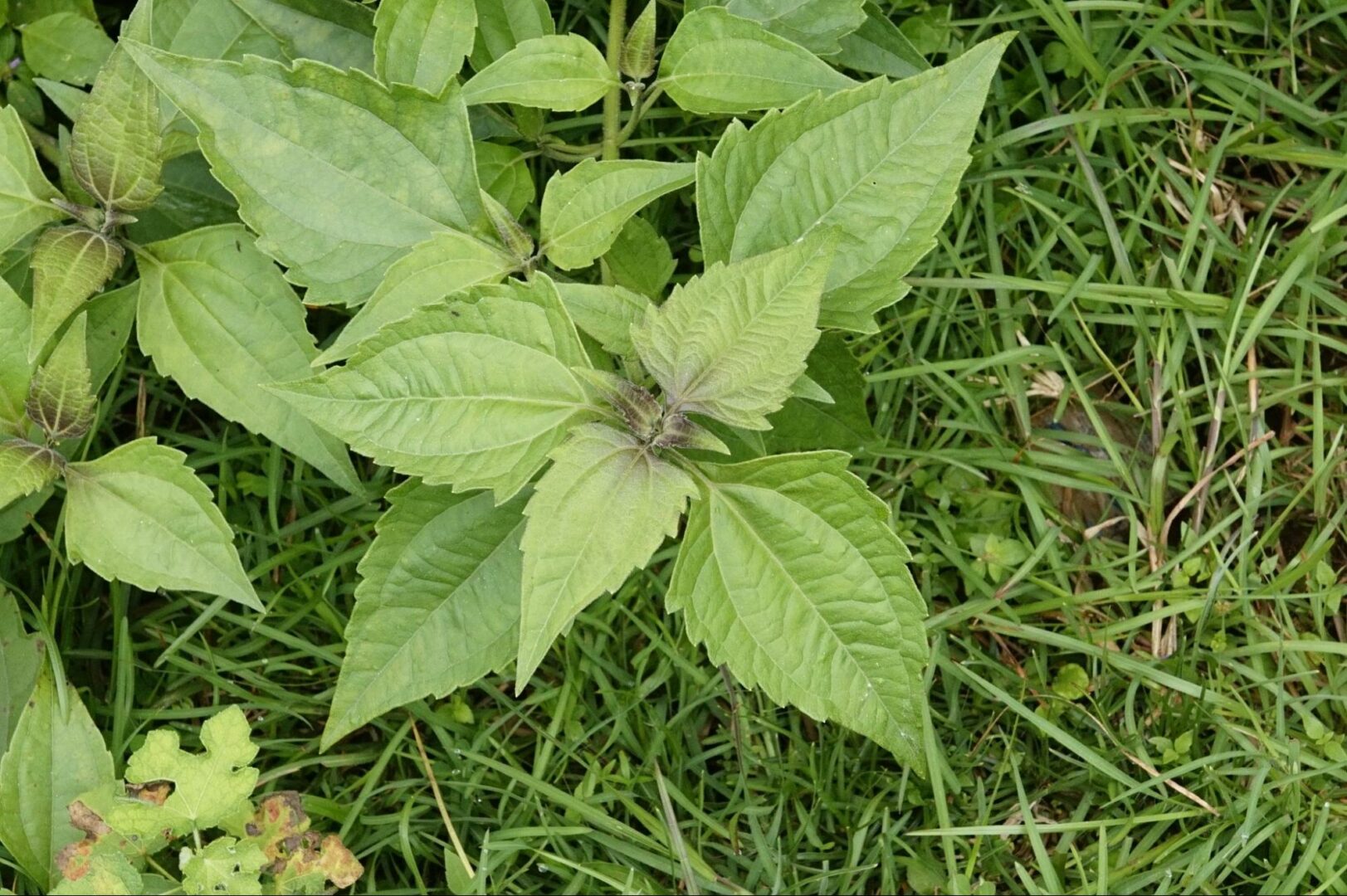
Invasive Plant Species Around Us
Lantana camara
Lantana camara, a species native to tropical America, is one of the top 10 most invasive plants globally. It was introduced to India in the 1800s, and has been rapidly spreading and taking over the local plants as well. Lantana camara alters soil properties, making the area susceptible to untoward consequences of climate change. In areas that are becoming warmer, this plant acts as a fierce conductor of forest fires, which are problematic to contain.
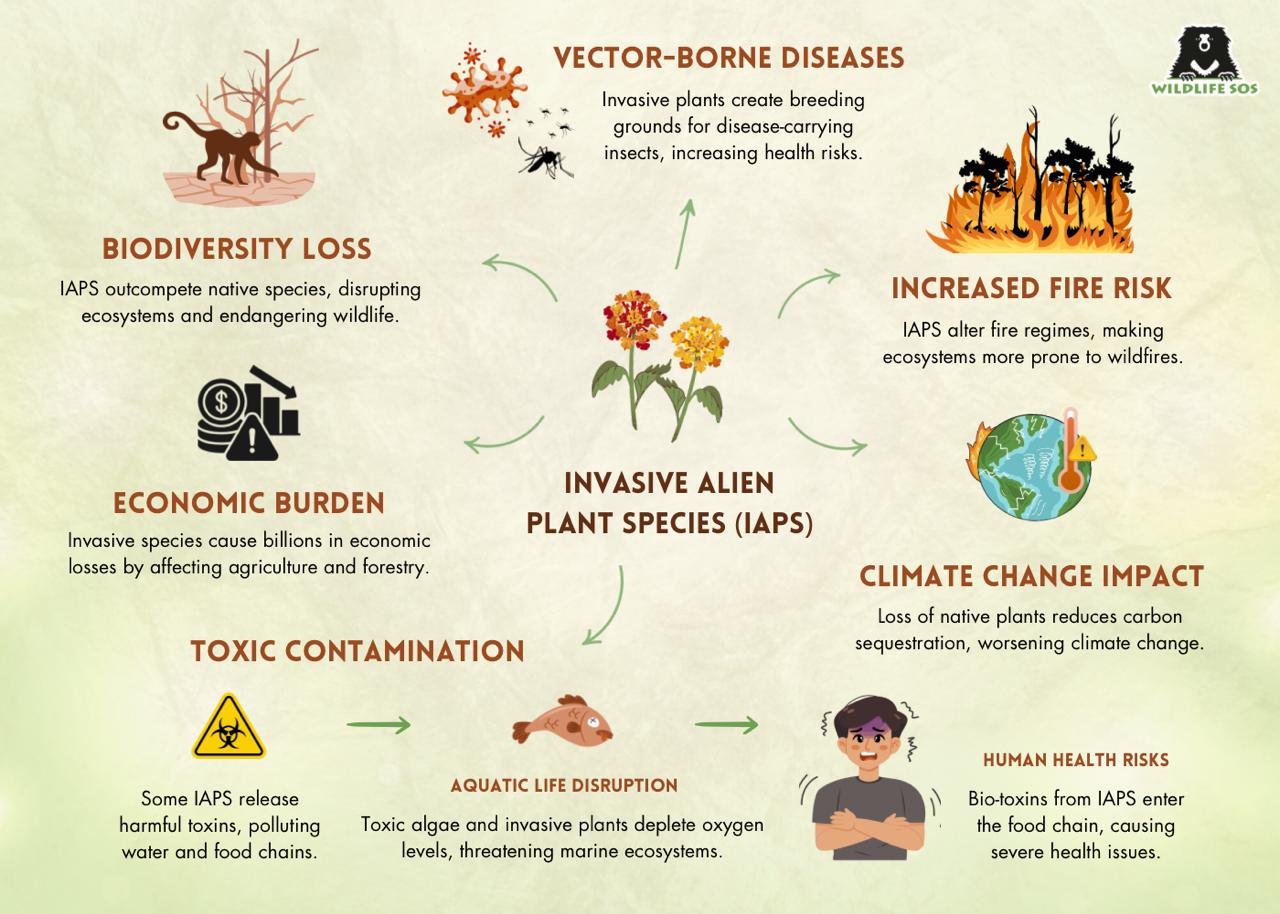
In East Africa, the dense growth of the Lantana camara provides a habitat for the tsetse fly, which is known to transmit sleeping sickness. In India, it has been noted that as native species decline due to this and other IAPS, so does the food for herbivores, making them and thereby their predators come closer to human settlements, creating situations of sudden encounters and conflict.

Parthenium hysterophorus
Parthenium hysterophorus, known as parthenium weed, accompanied imported wheat grains that arrived in India in the 1950s, and has spread widely in tropical regions. The impact of climate change has led to this plant rapidly invading the Himalayan mountains as well. Known to be an aggressive weed, paranthium hysterophorus rapidly adapts to new habitats, and has the ability to produce chemicals that can inhibit growth of indigenous plants (a process known as allelopathy). Its vigorous reproduction therefore qualifies this plant to be one of the formidable species to invade farms and fields. Not only does this plant affect local flora populations, it has proven to cause respiratory issues such as bronchitis and asthma, and skin conditions like dermatitis to humans and animals.

Water hyacinth
Water hyacinth (Pontederia crassipes), a striking aquatic plant from South America, was initially introduced to India by the British in the 18th century as an ornamental species. However, it has a tendency to spread and forms dense mats that block sunlight that submerged plants and aquatic organisms need, thus displacing native species and blocking waterways. The rapid growth of this plant also creates an ideal environment for mosquitoes to breed and thrive, causing malaria outbreaks. Additionally, the plant’s presence contributes to water quality degradation, with potential health consequences for aquatic animals.
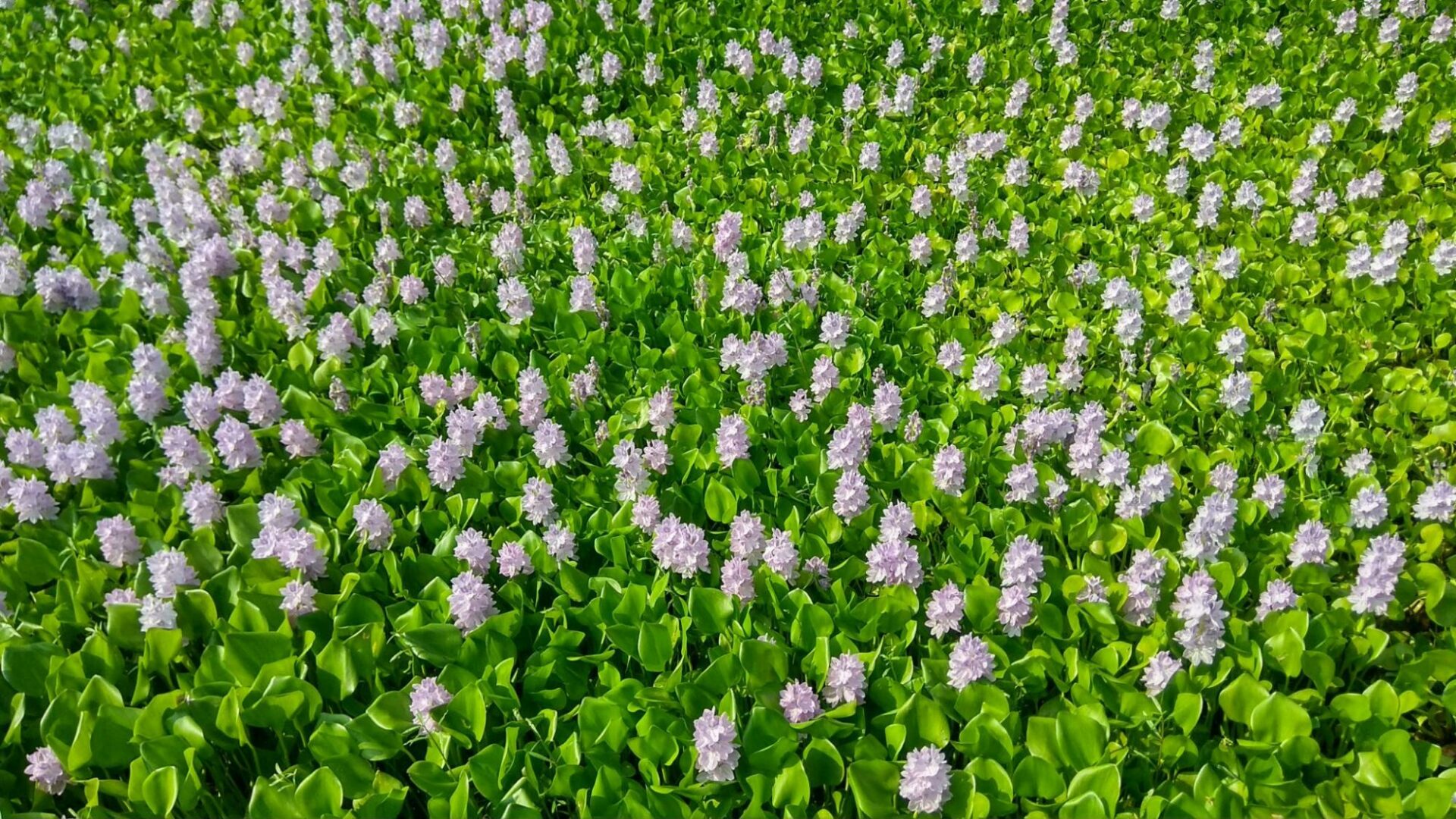
Prosopis juliflora
Prosopis juliflora is native to Mexico, South America, and the Caribbean, but poses severe ecological threats as an invasive species, particularly in arid and semi-arid regions. This evergreen, drought resistant plant can alter hydrological functioning, degrade soil quality, and reduce grazing potential for livestock. It contributes to land erosion by displacing grasslands and even depletes groundwater resources. In India, it has been reported that due to its inability to produce sufficient oxygen, it cannot provide shelter to birds. With its high regeneration capacity, Prosopis juliflora forms dense canopies that blocks sunlight, and remains difficult to control in the absence of a coordinated management strategy.

Xanthium strumarium L.
The invasion of Xanthium strumarium L. or the rough cocklebur, an annual herb native to both North and South America, poses a serious ecological and economic threat as it spreads across new regions. It has been suggested that this species was introduced to India during British rule, but has now become an invasive weed globally. Studies reveal that their rapid spread is caused largely by its seed dispersal. Its spiny seeds and fruits easily attach to the fur of livestock, facilitating their unintentional transport over long distances. The plant’s ability to adapt to diverse soils results in its aggressive competition with native flora for essential resources such as soil nutrients and moisture. It has affected agricultural lands in neighbouring countries like China and Pakistan, where crops like soybeans, maize, cotton, and sunflowers suffer significant yield losses.

Crofton weed
Crofton weed (Ageratina adenophora) is native to Mexico, but can now be found across the world. This noxious species diminishes grazing land, lowers crop yields, invades reserves, and disrupts ecosystems by releasing allelopathic compounds that hinder native plant growth. In India, this plant is spreading across the cool habitat of high-altitudes in the Himalayas. Studies predict that by 2070, invasive species like Crofton weed and Lantana camara will expand at elevations up to 3500 metres above sea level in the Himalayas, putting the region’s biodiversity at even greater risk. Climate change is gradually pushing up temperatures at Himalaya’s heights, which can contribute to the growth of these invasive species there.
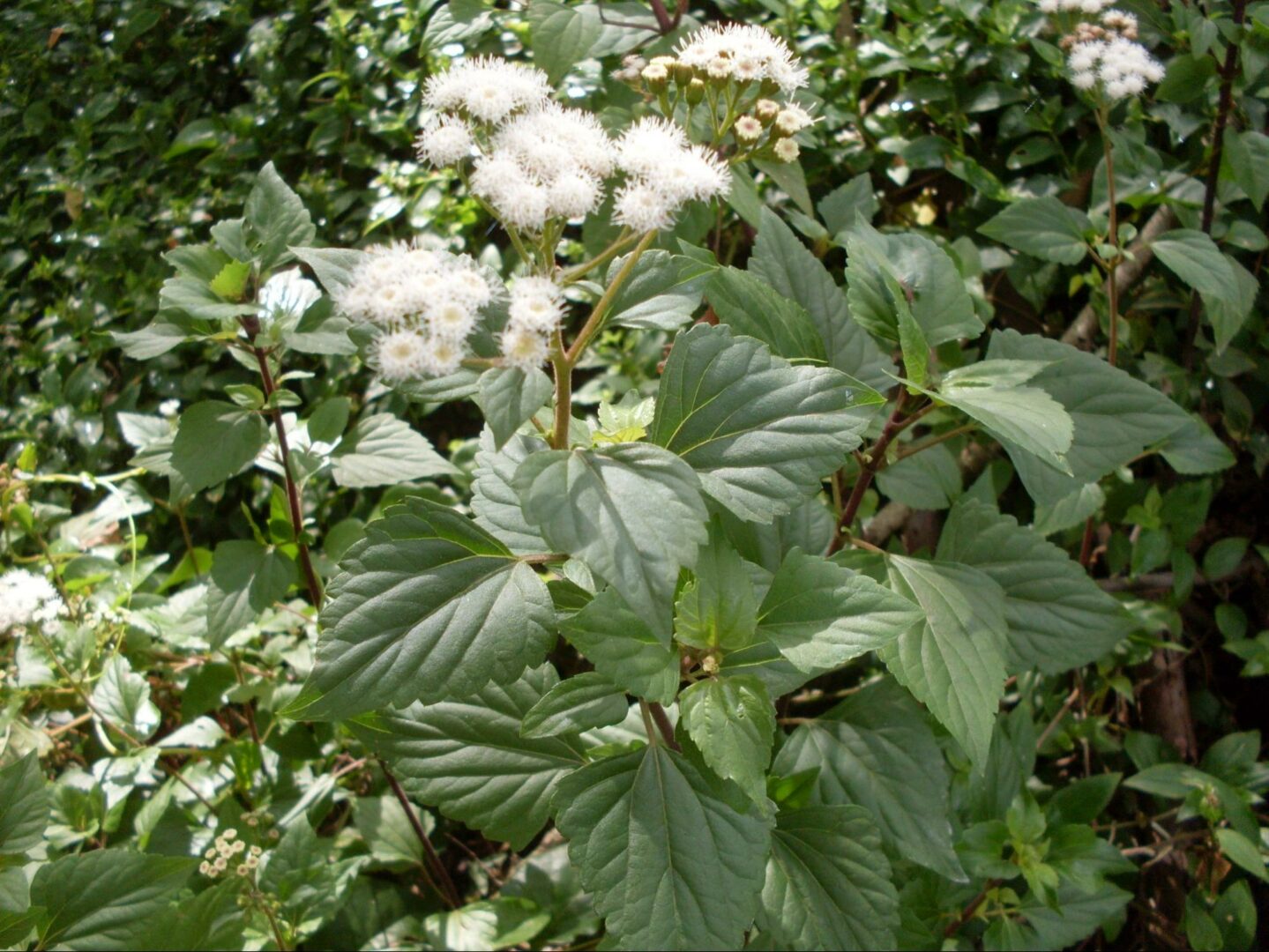
How to Curb the Spread of Invasive Species
As per a 2023 report, as many as 185 plant species have been listed out as invasive in India. Of these, 11 qualify as species of high concern as they can be found in 20 states of our country. The habitat domination of these species have impacted herbivores, and consequently apex predators like tigers. By understanding root causes that are threatening wildlife, these erstwhile understudied plant species are now gaining attention.
Emerging global issues, such as biodiversity decline, climate change, and unsustainable agriculture, are becoming centrestage concerns that are attracting the attention of people that aren’t involved in ecological studies as well. While native plant species play a key role to sustain forests, their degradation can modify environments, leading to socio-economic consequences.
To minimise the spread of invasive species, it is therefore important to be aware of them. Knowledge can promote the planting of species that are native and beneficial to its locality. Educational initiatives are vital in fostering community involvement in environmental conservation. Nature walks and workshops, such as the one held on herbarium-making, are interesting and easy ways to understand what nature around you comprises.
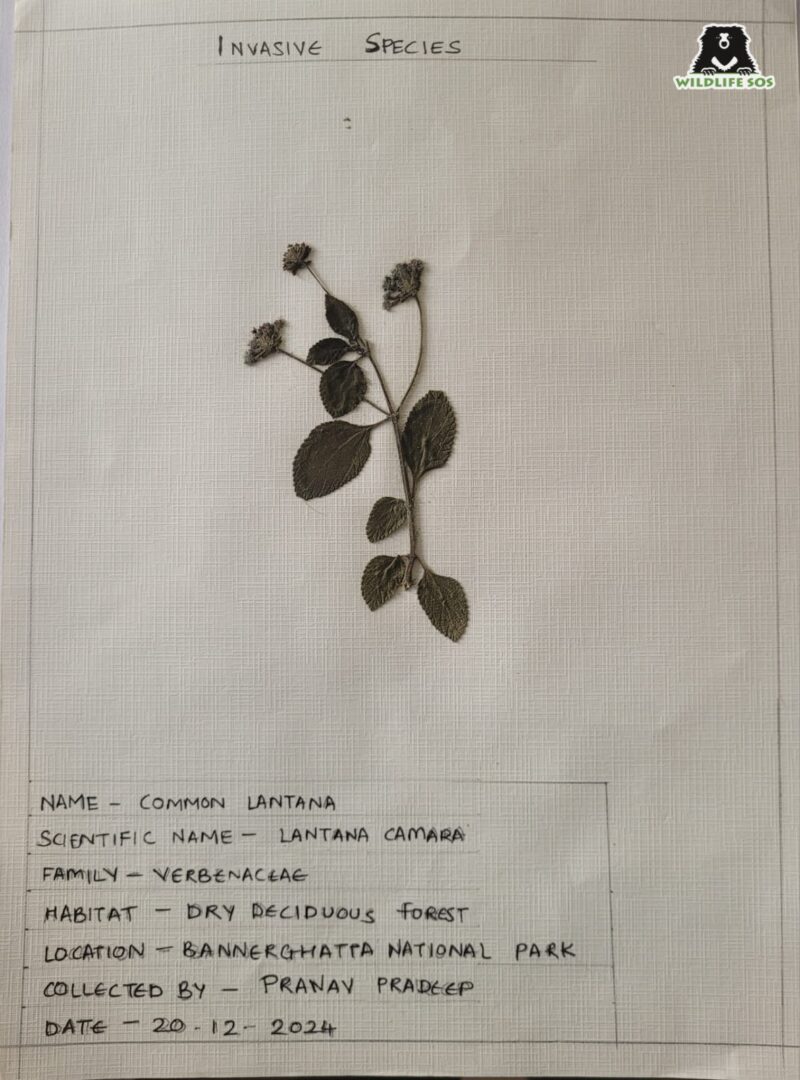
Discover more fascinating stories about the wonders of our diverse natural world! From unique plant species to intriguing wildlife facts, our articles delve deep into the elements that make nature so captivating. Subscribe to our newsletter today for regular updates and exclusive ‘wild’ content!

